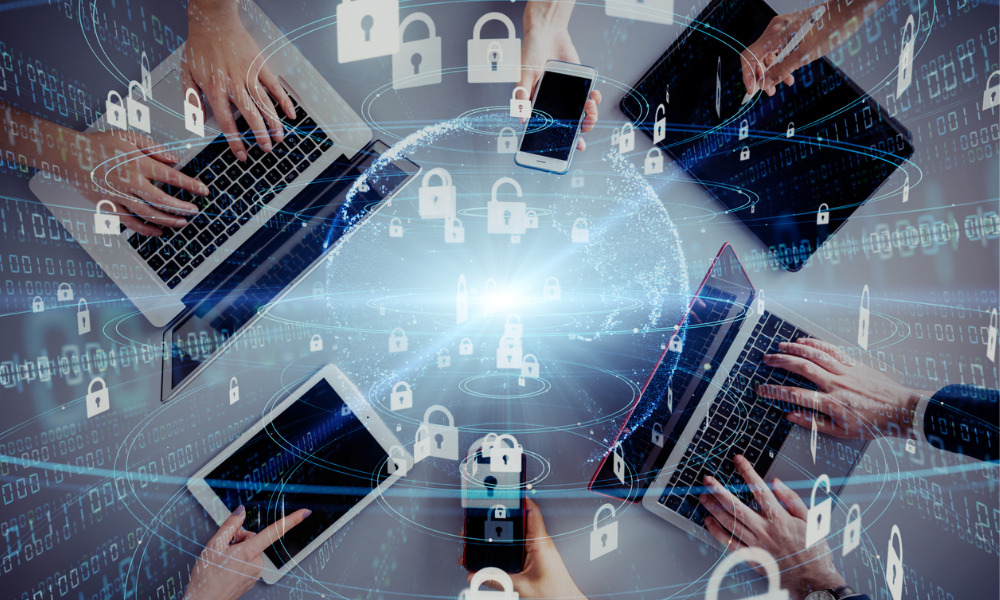
Examine the privacy issues around contact trace, employee privacy, and employer responsibilities in the era of COVID-19

Sponsored article
Many changes to life and the law have come about during, and because of, the COVID-19 pandemic. Among this seemingly endless list of changes are myriad privacy issues, as detailed in a June 2020 report.
First in the minds of many are the disruptions caused by a nearly-global shift towards working from home. As businesses and employees adjusted their approach to working, the privacy needs of both groups rose in prominence — and not always in alignment with one another.
Working where we live, or living at work?
Among individuals, it's not hard to imagine the concerns of privacy that stem from bringing the office into one's home. With so many first-time remote employees, questions of employee surveillance and what is or is not fair game abound. And while public sector employees are typically regulated by various laws, private employees are operating in a space that is much less defined.
From a business or employer perspective, the need to comply with privacy laws like Canada's Anti-Spam Legislation (CASL) is paired with an understandable desire to ensure ongoing productivity and performance. These needs have, in some cases, spurred employers to digitally monitor and report on employee activity such as screen time, mouse activity, and content.
This trend, as do most such measures, requires a balance on the part of the employer. Defining what type and amount of surveillance is reasonable will vary by industry, employee responsibility, and business objective. Even then, discussions and considerations should be made with regards to collective agreements already in place, necessity, risk/reward calculations, and alternative approaches to gathering similar information.
Last, but certainly not least, are the challenges tied to balancing a safe workplace with employee privacy concerns. With a frustratingly high transmission rate, notifications of exposure are fundamental to containing the virus itself. And yet, individual privacy rights and expectations remain. Navigating these challenges is no easy task for employers faced with competing needs of individual safety and a functional workforce.
Contact trace: A new phrase enters the lexicon
For some, a more surreal component of the COVID-19 pandemic is the way in which “surveillance state" concepts quickly became commonplace. While awareness of mobile phone tracking has been slowly broadening over recent years, the semi-futuristic ideas of contact tracing suddenly became quite real for the public at large.
In fact, contact tracing — the identification and tracing of individuals who have come into contact with a known or suspected carrier of a disease — is standard practice in the pandemic response toolkit. What's truly new is the pandemic itself. Much of the world has no living history of such a large-scale infection and the measures required to successfully fight the spread.
In Canada, contact tracing apps implicate privacy at nearly every level. At the federal level, the Privacy Act will regulate federal institutions who collect, use, or disclose personal information through contact tracing apps. Provincial public sector privacy laws, such as Ontario's Freedom of Information and Protection of Privacy Act (FIPPA), will regulate provincial public bodies' handling of personal information gleaned from contact tracing apps.
Health information privacy laws, such as Ontario's Personal Health Information Protection Act, 2004 (PHIPA), are likely to be the most impactful. These laws regulate how health information custodians collect, use, and disclose personal health information. Custodians can include health care practitioners such as physicians, nurses, and pharmacists, but also institutions such as hospitals, long-term care homes, and authorities such as provincial ministries of health. Health information privacy laws also affect custodians' agents, electronic service providers, and non-custodians to whom a custodian discloses personal health information.
Indeed, with so much surrounding the Coronavirus and its effect on lives and laws, the list goes on and on. For a more thorough exploration of this topic, read Privacy Issues Arising from the COVID-19 Pandemic.
To see how Thomson Reuters’ legal technology can help your firm, contact us for a free consultation.